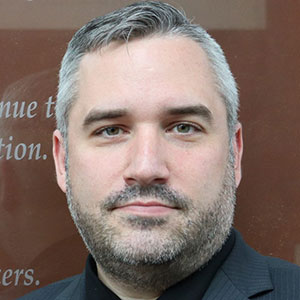
The intersection of governance and psychological health and safety
By Bill Howatt and Troy Winters

Photo: andranik123/Adobe Stock
The Governance & Accountability Institute in New York City estimates that 90 per cent of S&P 500 companies publish ESG reports in some form, and a recent McKinsey & Company report suggested that approximately 70 per cent of Russell 1000 companies post them.
This report indicated that environmental issues have been the main driver (the E) and why ESGs have been gaining more attention as a critical consideration for corporate sustainability. It appears that boards are leveraging ESG as a framework to collect data supporting their roles in facilitating effective oversight and due diligence.
ESG refers to criteria that investors, boards, and senior leadership can leverage to understand better and evaluate an organization’s impact on the environment (E). The “S” stands for social, which relates to a company’s impact on people, employees, and customers. For some organizations, it encompasses communities and society. The “G” represents the metrics used to determine organizations’ governance, including internal management, leadership structure, and financial and ethical standards.
The concept of employee inclusion, diversity, and equity focuses more on the “S.” OHS legislation in North America provides minimal expectations for employers to protect workers’ physical health and, in most jurisdictions, requirements for violence and harassment protection.
While psychological health and safety (PHS) receives some lip service, no standard legislation defines employers’ obligations to control workers’ PHS risk, as does OHS. As a result, North American organizations are not provided precise requirements or expectations like OHS mandates for employers to screen for PHS hazards to protect workers from mental harm or injury.
Yet, there is a direct relationship between employees’ perceptions of psychological safety and turnover, disability, and performance.
Workforce well-being is a critical factor that directly impacts and predicts an organization’s sustainability risk. Some evidence that this may be an emerging trend comes out of Australia, which has updated its Workplace Health and Safety Act to mandate that all employers identify potential psychosocial hazards and eliminate or reduce the risks of mental harm.
This is important as boards and senior leadership can make decisions that directly influence employees’ experience. Senior leaders are accountable for setting expectations for the culture whose quality can directly impact employees’ risk of mental harm and health. The growing cost of workplace mental health is becoming a greater financial risk and concern for senior leaders and boards. Employees’ stress at work and risk of mental injury can predict short- and long-term mental health disability and further hurt organizations’ bottom lines as compensation legislation is updated. For example, workers with fair or poor mental health take nearly 12 days of unplanned leave annually, compared with 2.5 days for those enjoying good mental health.
Board culture: Tone from the top
How board members treat each other and interact with executives sets the tone for an organization. People are appointed to governance boards for many reasons and bring specific skill sets. To take advantage of that diversity, boards must be safe places where members can ask follow-up questions without fear of negative consequences.
To create authentically inclusive boards, chairs must have the skills to facilitate psychologically safe environments that welcome and encourage diverse opinions from all members. Board members can allow their skill sets to shine more when they operate in an atmosphere where they can voice their opinions without fear of negative judgement or retaliation. Psychological health and safety to facilitate inclusion and workplace mental health is gaining attention at board and organizational levels.
Relationships, communication, and strategy sessions between boards and executives
It would be reasonable to believe that any individual in a senior leadership role is confident, strong-willed, and resilient to adversity. However, people skills and emotional literacy are not often considered when promoting employees to leadership positions. Boards that take a psychologically safe approach to their executive teams can set a foundation for trust, allowing for difficult conversations, debates, and challenges with executives. Boards and leaders with trusted relationships keep emotions and egos out of the way and focus on protecting for-profit organizations’ shareholder value and achieving nonprofit organizations’ purposes.
Three considerations for influencing expectations, governance, and psychological health and safety
Regardless of a board’s or senior leadership’s readiness to expand its ESG reporting to include workers’ well-being, the following steps can help facilitate the Intersection of Governance and Psychological Health and Safety.
Train boards in psychological safety and organizational sustainability goals. Technology drives how organizations behave, as do environmental changes and employers’ expectations regarding duties and roles. Also changing are workers’ expectations of what employers must do to create meaningful employment. Human emotion and mental health are becoming more significant drivers for attracting and retaining employees. Boards typically look for technical competencies in governance, human resources, financials, and IT security. All board members should be trained in psychological safety to interact with executive leadership teams. This positions the chair to set expectations for board members’ behaviour and create conditions to challenge, debate, and ask questions effectively in a spirit of good governance.
Set expectations with executive teams for working with boards. Boards provide oversight and executive teams facilitate management and decision-making to achieve organizational goals. Boards ensure that due diligence within their oversight protects organizations’ sustainability and guides leaders to operate to their full potential. Environments that fail to do this risk having individuals who feel unsafe representing their authentic selves and stating their views and opinions. This stymies and limits the benefits of diverse thinking and ideas, often leading to negative group think and less-than-optimal interactions.
Leverage external reviews to obtain unbiased workforce health and employee experience. Understanding the impact of psychological health and safety within the entire organization at the directors’ board level can reduce risk, increase effectiveness, and help a board know how it is meeting workers’ needs. Board governance depends on independent third-party financial audits to ensure finances are accurate, as financial health is a lagged indicator of organizational sustainability. Similarly, workers’ psychological health and safety are lead indicators of turnover, disability, counter-productive behaviour, accidents, and overall productivity. External reviews can shine a light on psychosocial risk factors and hazards, employee well-being and safety, confidence in leadership, and the employee experience. Like independent financial auditors, independent psychological health and safety experts can provide unbiased opinions, risk reports, opportunities, and strengths to assist boards in facilitating oversight and ensuring the information senior leadership provides about workforce sustainability is accurate.
The reputational risk of an organization that doesn’t care for its employees impacts its ability to attract talent and its brand. Major psychological safety issues that resulted in employee silence include NASA’s Challenger shuttle disaster, GM’s ignition switch crisis, VW’s dieselgage scandal, Wells Fargo’s fake account issue, and France Telecom’s restructuring that went beyond damage to brand and shareholder value to workers dying by suicide. All these tragic events could have been avoided if employees had safe channels to communicate to boards what was happening instead of what was being reported (e.g., favourable financial results without insight into mental harm and risks taken to achieve results).
Like financial auditors, boards can leverage external subject matter experts with credentials and competencies to facilitate psychological health and safety reviews through an intersectional lens. Boards can use this procedure as a due diligence step to ensure they have the necessary facts to guide executive leadership teams.

Dr. Bill Howatt is the Ottawa-based president of Howatt HR Consulting.

Troy Winters is a senior health and safety officer at the Canadian Union of Public Employees (CUPE) in Ottawa.